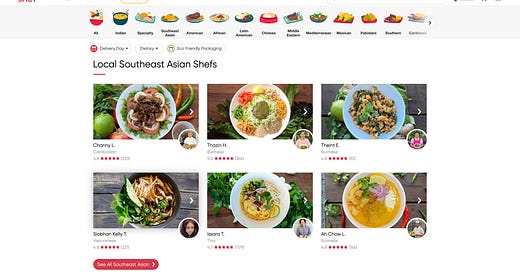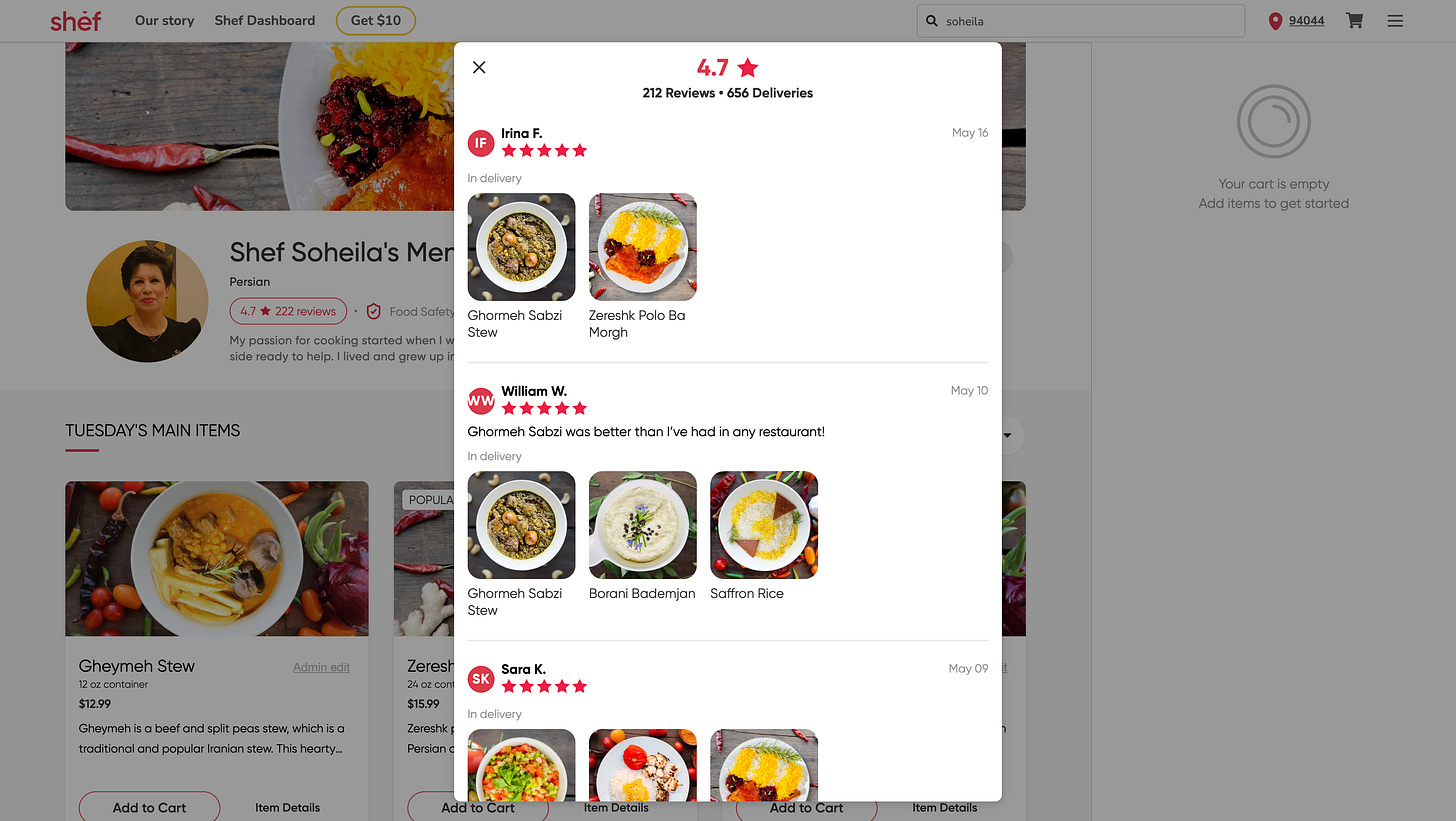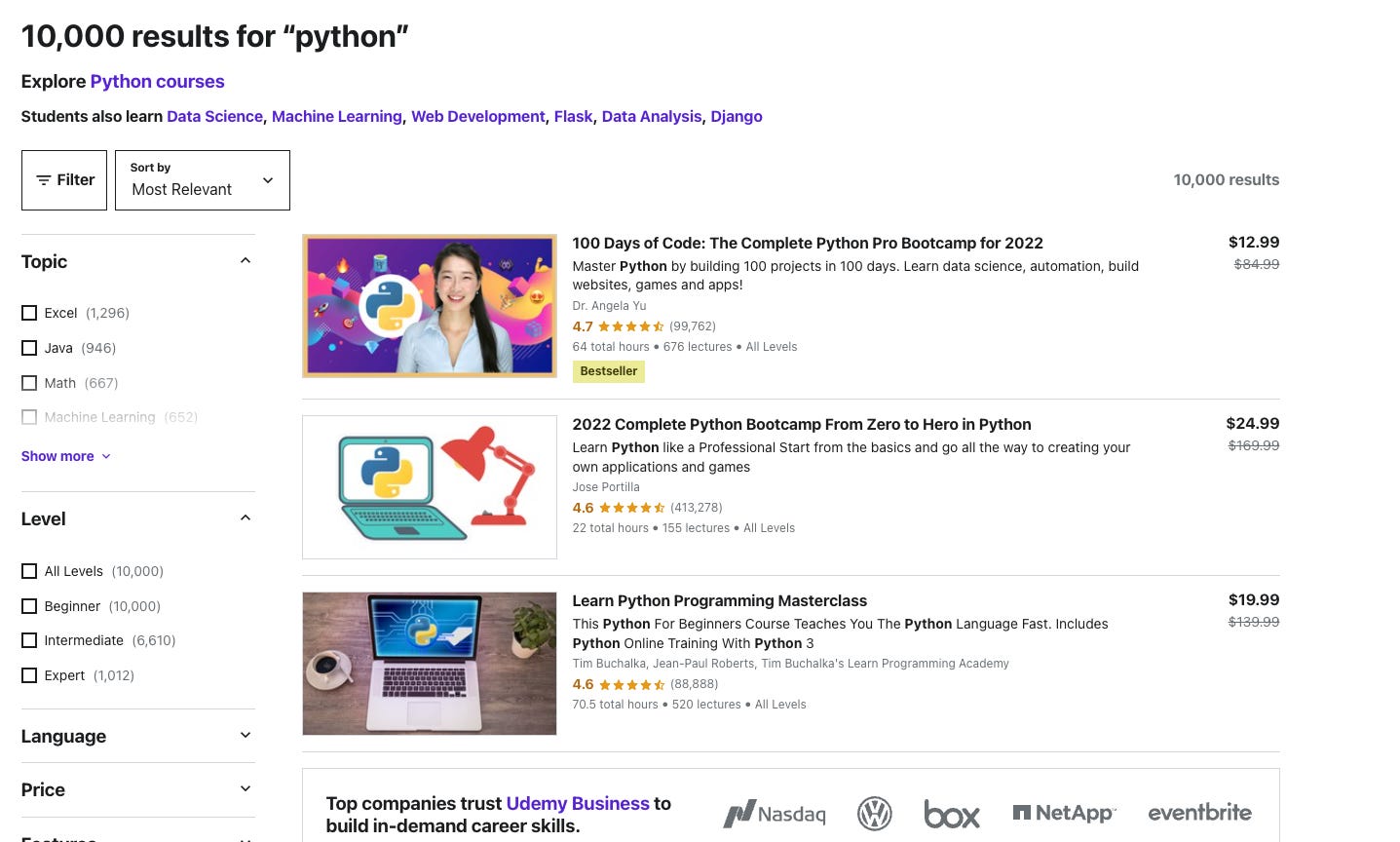How to build trust in a marketplace
Lessons from Lyft, Thumbtack, Rover, Snackpass, Peerspace, Shef, Good Dog, and Udemy
👋 Hey, I’m Lenny and welcome to a 🔒 subscriber-only edition 🔒 of my weekly newsletter. Each week I tackle reader questions about product, growth, working with humans, and anything else that’s stressing you out about work. Send me your questions and in return I’ll humbly offer actionable real-talk advice.
Q: I’m building a marketplace startup. How do I build trust for my new marketplace?
Convincing people to get into the car of, send money to, or meet, a complete stranger is a hard problem, rooted in our evolution.
“Throughout human history, we have distrusted people outside our clan, our tribe. We believe strangers will do us harm. Why? In deep time, hominids outside the family group were likely to be a raiding party.” —Gordon H. Orians
A lack of trust is why many marketplaces have struggled (e.g. Couchsurfing) and why those that cracked the trust problem (e.g. Airbnb) have gone on to do exceptionally well.
To give you a comprehensive answer, I got in touch with the founders and early growth leaders at a dozen of today’s most successful marketplaces, including Lyft, Thumbtack, Rover, Shef, Peerspace, Snackpass, Good Dog, and Udemy, and asked them what they found to be the most effective way to build trust in their marketplace early on. I was surprised by the variety of answers. I was expecting to hear “reviews” and maybe a couple of other tactics. Instead I found six effective ways to build trust in a new marketplace:
Reviews
Verifying your supply
Leaning on social proof
Creating a perception of quality
Providing a safety net
Delivering magic
Let’s explore each in a bit more depth.
Thank you to Alvin Salehi (Shef), Archie Abrams (Udemy), Evan Goldin (Lyft), Lauren McDevitt (Good Dog), Matt Bendett (Peerspace), Kevin Tan (Snackpass), Philip Kimmey (Rover), and Sander Daniels (Thumbtack) for sharing their insights with me for this post 🙏
1. Reviews
Reviews, as expected, were the most frequently cited strategy for building trust. They’re essentially table stakes these days.
Here’s Joe Gebbia (co-founder of Airbnb) talking about the power of reviews for Airbnb’s early success (~90 seconds long):
Alvin Salehi (co-founder of Shef) shared a similar lesson:
“For the longest time, we only had star ratings on our platform. But we found that ratings alone weren’t enough to help customers make efficient decisions. As a result, we also began publishing full text reviews and photos of the dishes that were being reviewed to help customers avoid the paradox of choice and make well-informed decisions more quickly, which has had a positive impact on acquisition and retention.”
Matt Bendett (co-founder of Peerspace) had the same experience building Peerspace, but with a twist:
“Initially, we started simple and built a mutual review system that was thorough, easy to complete, and required both sides to leave a review in order to transact again. That meant reviews didn’t expire and hosts needed to review their guests to accept their next inquiry. Perhaps not the friendliest UX, but this force-enabled early trust and social proof that propelled the marketplace forward.”
Same for Thumbtack, as Sander Daniels (co-founder) shared with me:
“We built reviews into the product from day one.”
Lauren McDevitt, co-founder of Good Dog, found that traditional reviews alone weren’t enough, so they made them more personal:
“When we talked to our users, we found a lot of distrust in review systems. So instead, we focused on telling the meaningful stories of our users through a feature called ‘Verified Owner Stories’, where new dog owners are able to share detailed information and photos about their interactions with their breeder on our platform. The little details shared like, ‘they sent a blanket and photo book home with my puppy’ show the warmth and care our community puts into their work, leading to a more authentic feeling of trust and quality.”
And at Udemy, Archie Abrams (early growth leader) found that the volume of reviews created an unexpected tension:
“There’s an interesting tension in something like number of ratings and the number of students. Look at the screenshot below. By putting the number of ratings in the review, you signal to the student you can trust this (good), but you also make the increments (i.e. courses with a lot of ratings) much more entrenched, hurting trust with instructors (particularly new ones). This was a constant balancing act.”
If you have a trust issue and you don’t have a review system—the path is clear.
2. Verify your supply
The second most frequently cited strategy for building trust was to take steps to verify that your supply meets a certain level of quality, or safety. And that makes sense. People will trust your marketplace if you’ve taken steps to make it trustworthy.
For GOAT (and StockX), verifying supply was the core of their entire strategy. Here’s Eddy Lu’s early thinking (via Input magazine):
“Why don’t we build a marketplace based on trust and safety so that no consumer has to ever have the experience that you just had of spending hundreds of dollars on a pair of shoes and get something that’s not authentic.”
And here’s how they do it:
“If you want to sell sneakers or any apparel on GOAT, for instance, you first have to be approved by a team that looks into your personal Twitter or Instagram account to ensure you’re an actual person and that you have a history of selling goods online. Then, before someone posts an item for sale, they have to send pictures to GOAT, which uses a combination of image recognition and machine learning to spot details that will ensure its authenticity. The final step in the process comes when the sneakers or clothes arrive in one of GOAT’s authentication centers across the world, when they’re inspected one last time by a human before they get shipped to the buyer if there are no issues with the product.” —Edgar Alvarez Barajas, Input magazine
Good Dog similarly built their reputation on the quality of their supply, and thus required specialized training to do their verification of dog breeders:
“Vetting a source for a dog requires expertise that most people looking for a dog don’t have. What signals should you look for when assessing a dog breeder, shelter, or rescue to ensure you’re getting a dog from a source with responsible practices? We found that prior to Good Dog, people were attempting to make judgment calls based on their own intuition, which left them feeling unsure and uncomfortable. Our team is prepared and trained to make those judgment calls, which means potential owners feel safer on the platform and the breeders, shelters and rescues feel proud to support our community and mission.”
—Lauren McDevitt, co-founder
For Thumbtack, verifying its supply (aka their “pros”) through background checks was instrumental in its early success, as co-founder Sander Daniels shared:
“To create trust early on, we built a number of trust and safety mechanisms into the product, including background checks for pros. We awarded and displayed badges on pro profiles for going through stages of our trust and safety process that verified their identity and work quality. This significantly helped build trust in the marketplace.”
As it was for Rover:
“Two things we’ve done for a long time that most helped create a sense of trust in the marketplace:
1. Background checks
2. Manual profile review for all sitters applying to the platform
There’s lots of other stuff we do, but those two we’ve been doing for most of Rover’s history, and are likely the most impactful.”
—Philip Kimmey, co-founder
You can read about how Rover does this here.
Is there something you can do to “verify” the quality of your supply?
3. Lean on social proof
A surprising number of founders referenced social proof as the most important ingredient in their early trust-building efforts.
For example, Snackpass:
“We primarily built trust by piggybacking on social proof and authority. We partnered with names that people were already familiar with—university sports teams, student clubs, frats and sororities, flagship restaurants.”
—Kevin Tan, CEO







